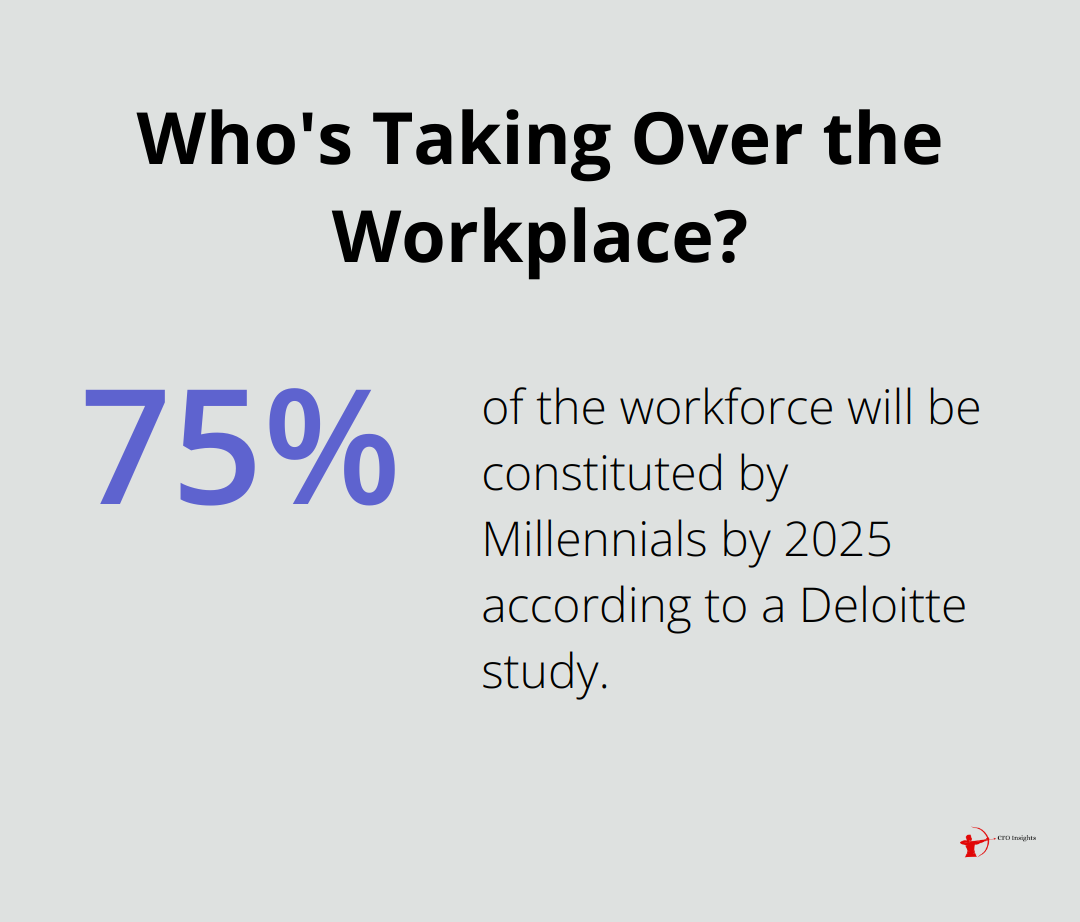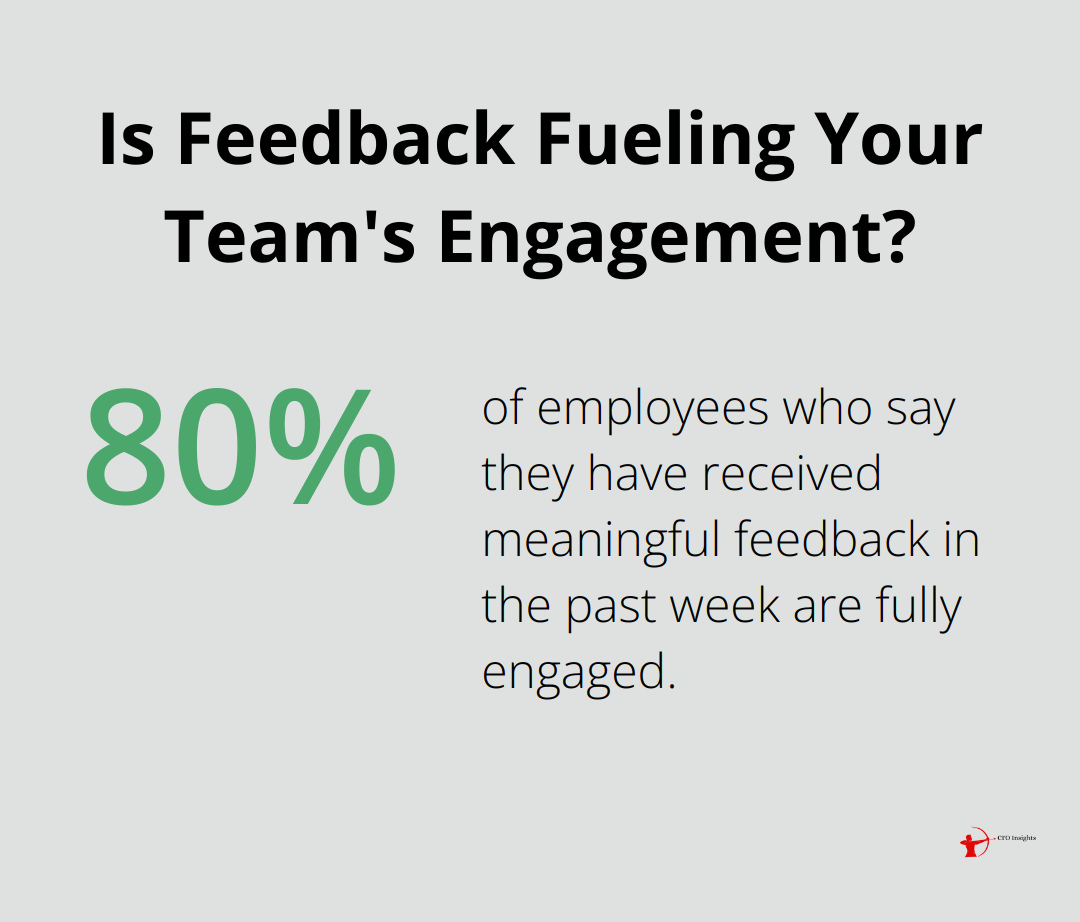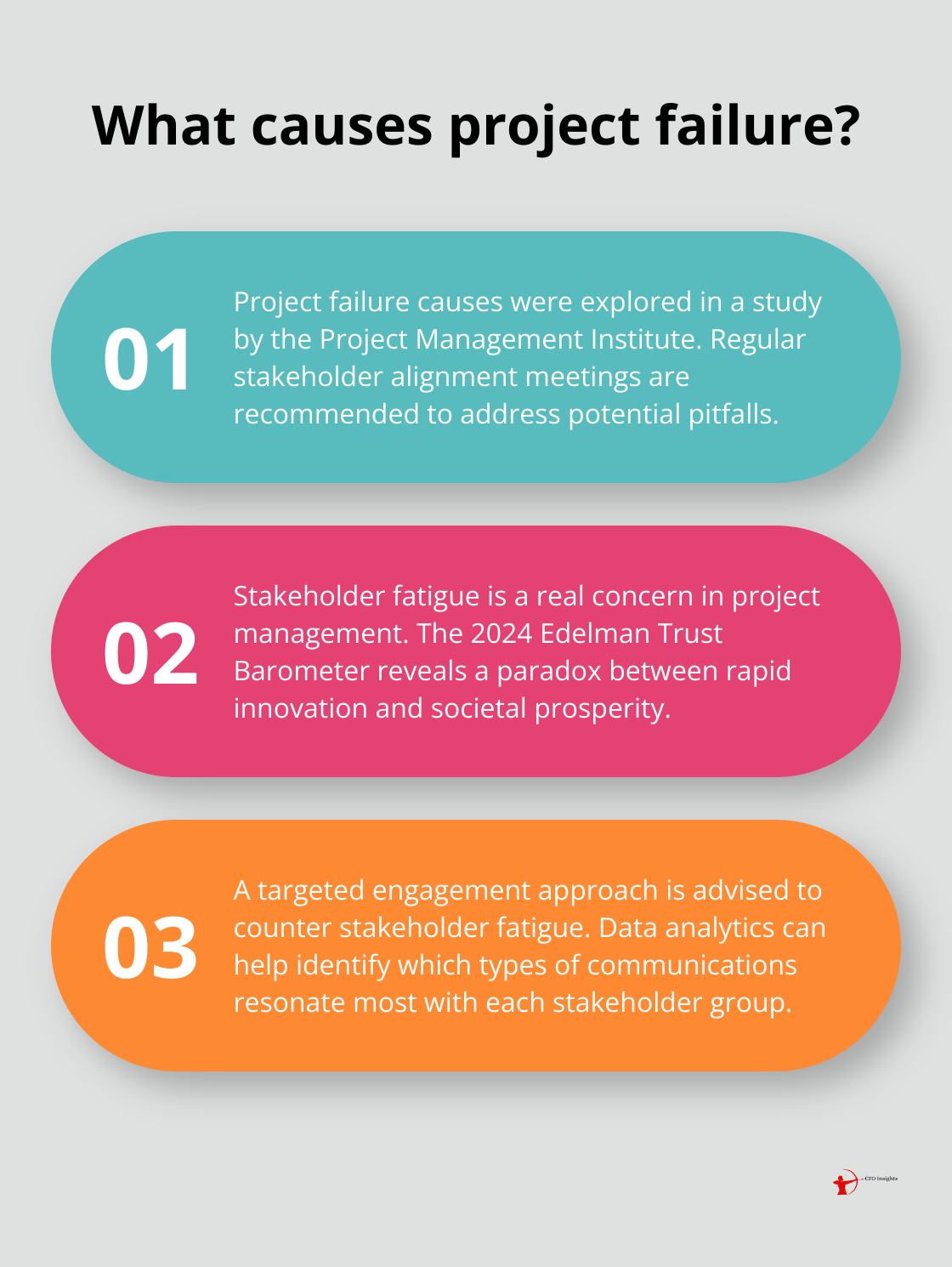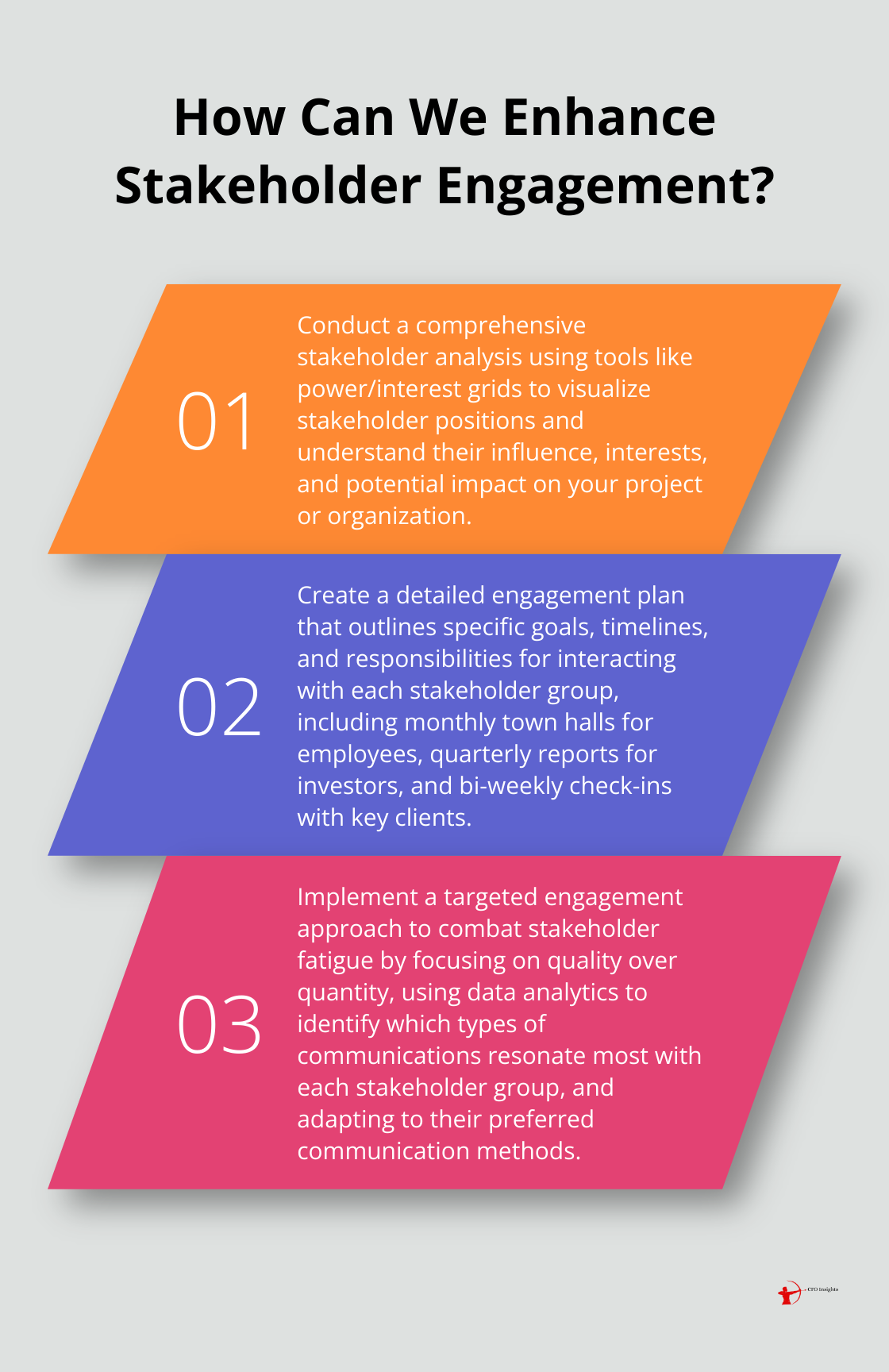Stakeholder engagement is the cornerstone of successful business operations. At CFO Insights, we’ve seen firsthand how effective stakeholder management can drive organizational success and foster long-term growth.
In this post, we’ll explore best practices for stakeholder engagement meetings and provide actionable strategies to enhance your stakeholder relationships. We’ll also address common challenges and look at emerging trends in this critical area of business management.
What Is Stakeholder Engagement?
Defining Stakeholder Engagement
Stakeholder engagement is the process of involving individuals and groups who have a vested interest in an organization’s activities, decisions, and outcomes. It goes beyond mere communication; it’s about building relationships, fostering trust, and creating value for all parties involved.
The Business Impact of Stakeholder Engagement
The importance of stakeholder engagement cannot be overstated. Effective stakeholder engagement can guarantee that project goals are strategically aligned with relevant stakeholders. This highlights the critical nature of getting it right. When executed effectively, stakeholder engagement leads to improved decision-making, reduced risks, and increased project success rates.
Identifying Key Stakeholders
The first step in effective stakeholder engagement is to identify who your stakeholders are. These typically include:
- Internal stakeholders: Employees, managers, board members
- External stakeholders: Customers, suppliers, investors, regulators, community members
Each group has unique needs and expectations. Employees might prioritize job security and career growth, while investors focus on financial returns and risk management.
Tailoring Engagement Strategies
After identifying stakeholders, it’s essential to tailor engagement strategies. A one-size-fits-all approach rarely works. Millennials, who will constitute 75% of the workforce by 2025 (according to a Deloitte study), often prefer digital communication channels and value transparency and social responsibility.

Regulatory bodies, on the other hand, might require formal reports and face-to-face meetings. Understanding these preferences and adapting your approach accordingly can significantly improve the effectiveness of your engagement efforts.
The Role of Technology in Stakeholder Engagement
Technology plays an increasingly important role in stakeholder engagement. Digital platforms and tools (such as project management software and communication apps) can streamline engagement processes and facilitate real-time feedback. These technologies allow organizations to reach a wider audience, track engagement metrics, and respond quickly to stakeholder concerns.
As we move forward, the next chapter will explore effective strategies for stakeholder engagement, including how to develop clear communication channels and create a comprehensive stakeholder engagement plan.
How to Engage Stakeholders Effectively
Conduct a Comprehensive Stakeholder Analysis
Start your stakeholder engagement process with a thorough analysis. This step involves more than creating a list of names; it requires a deep understanding of each stakeholder’s influence, interests, and potential impact on your project or organization. Use tools like power/interest grids to visualize stakeholder positions. Project Stakeholder Management Process Summary provides valuable insights into this crucial step.
Customize Your Communication Strategy
After mapping your stakeholders, tailor your communication approach for each group. High-power, high-interest stakeholders might require frequent face-to-face meetings, while others might prefer periodic email updates. PwC’s 2022 Consumer Intelligence Series Survey on Trust shows a jarring gap in trust between businesses and their customers and employees, highlighting the importance of tailored communication.
Create a Detailed Engagement Plan
Develop a comprehensive stakeholder engagement plan that outlines how and when you’ll interact with each stakeholder group. This plan should adapt to changing circumstances. Include specific goals, timelines, and responsibilities. For example, if you’re working on a major organizational change, your plan might include monthly town halls for employees, quarterly reports for investors, and bi-weekly check-ins with key clients.
Establish Continuous Feedback Mechanisms
Set up systems for ongoing feedback. This could involve regular surveys, suggestion boxes, or dedicated feedback sessions. The key is to not just collect feedback but to act on it visibly. Gallup data shows that 80% of employees who say they have received meaningful feedback in the past week are fully engaged. Apply this principle to all stakeholder groups for maximum effect.
Leverage Technology for Enhanced Engagement
Utilize digital platforms and tools (such as project management software and communication apps) to streamline engagement processes and facilitate real-time feedback. These technologies allow organizations to reach a wider audience, track engagement metrics, and respond quickly to stakeholder concerns.

Effective stakeholder engagement requires strategy, adaptability, and genuine commitment. As we move forward, we’ll explore common challenges in stakeholder engagement and how to overcome them, ensuring that your engagement efforts yield long-term benefits for your organization.
Navigating Stakeholder Challenges
Balancing Competing Interests
Stakeholders often have conflicting priorities. Shareholders might push for cost-cutting measures, while employees advocate for increased benefits. To navigate this, we recommend a stakeholder priority matrix. This tool helps identify stakeholders’ interests, impact level, and relative priority, allowing for more informed decision-making.

A study by the Project Management Institute explored the causes of project failure. To avoid potential pitfalls, we suggest regular stakeholder alignment meetings. These sessions provide a platform for open dialogue and help find common ground among diverse interests.
Combating Engagement Fatigue
Stakeholder fatigue is a real concern. The 2024 Edelman Trust Barometer reveals a new paradox at the heart of society, with rapid innovation offering the promise of a new era of prosperity. To counter potential fatigue, we advise our clients to implement a targeted engagement approach.
Instead of bombarding stakeholders with constant updates, focus on quality over quantity. Use data analytics to identify which types of communications resonate most with each stakeholder group. Some may prefer concise email updates, while others value in-depth quarterly reports.
Building and Maintaining Trust
Trust forms the cornerstone of effective stakeholder relationships. To bridge potential trust gaps, we recommend implementing a transparent communication strategy.
This involves sharing not just successes, but also being open about challenges and setbacks. Regular town halls, honest financial reporting, and prompt addressing of concerns can significantly boost trust levels. Trust is earned through consistent actions, not just words.
Adapting to Evolving Stakeholder Needs
In today’s fast-paced business environment, stakeholder needs constantly shift. The key is to stay ahead of these changes. We advise our clients to conduct annual stakeholder surveys to gauge changing priorities and expectations.
Additionally, consider forming a stakeholder advisory board. This group can provide valuable insights into emerging trends and potential issues before they become major problems. Proactively addressing evolving needs will maintain strong stakeholder relationships even in turbulent times.
Leveraging Technology for Enhanced Engagement
Digital platforms and tools (such as project management software and communication apps) can streamline engagement processes and facilitate real-time feedback. These technologies allow organizations to reach a wider audience, track engagement metrics, and respond quickly to stakeholder concerns.
Try to integrate these tools seamlessly into your stakeholder engagement strategy. This approach will not only improve efficiency but also demonstrate your commitment to modern, responsive communication methods.
Final Thoughts
Effective stakeholder engagement forms the foundation of successful business operations. Organizations that prioritize stakeholder relationships often experience improved decision-making, reduced risks, and increased project success rates. The rise of digital platforms will transform how companies interact with their stakeholders, enabling more personalized and real-time communication.

Stakeholder engagement meetings remain a critical tool for fostering open dialogue and aligning diverse interests. These meetings provide a platform for addressing concerns, sharing updates, and collaboratively developing solutions. The ability to balance virtual and in-person engagement will prove crucial for maintaining strong stakeholder relationships.
We at CFO Insights understand the importance of effective stakeholder management in driving financial success. Our fractional CFO services help organizations optimize their financial strategies while maintaining strong relationships with all stakeholders (including employees, investors, and customers). We invite you to explore how our expertise can support your stakeholder engagement efforts and drive sustainable growth for your business.




